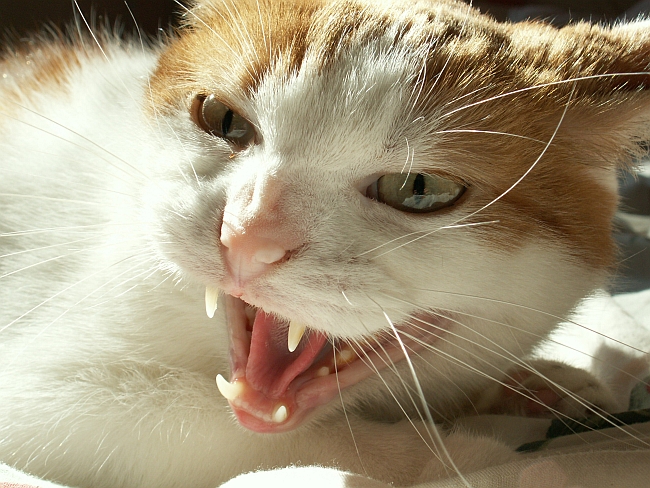
Though dogs are regarded as more loyal and affectionate pets than cats, canines have a much higher degree of attacks and injuries compared with their feline counterparts. However, it does not follow that cats never attack their owners, or that they are less likely to show aggression. Cats rarely attack humans unprovoked, though tragically it does happen on occasion. Avoid any fierce feline onslaught by recognizing the warning signals and understanding what behaviors provoke aggression.
Warning Signs
Cats communicate with us through body language and sound. When your cat seems on edge, or as if he is about to spring into defense-mode, look for the below indications that a battle may soon begin:
- Twitching tail
- Hissing and growling
- Flattened ears
- Tense posture
- Crouching/kneading paws
- Dilated pupils
- Unflinching eye contact
Types of Attacks
Many feline owners have experienced what seem to be random bouts of aggressive behavior from their felines. Below are some of the bizarre kinds of attacks that can occur with domestic kitties:
- Nipping during playtime
- Biting while being petted
- Defensive hissing when approached
- Manic scratching and clawing or limbs
- Stalk and pounce attacks
- Biting or clawing at the face with no apparent provocation
Usual Causes for Attacks
- Unpredictable movement: When a human moves suddenly, it catches the cat’s attention. Sometimes they instinctively will nip or bite at the moving object.
- Playtime & Rough housing: Playing with a cat often includes swift chasing behavior which insights a cat’s instinct to pounce or trap. If a human is petting a cat in sensitive places (such as the underbelly, armpits, etc.) a kitty might play keep away with your hand by scratching or biting it.
- Threatening behavior: When someone corners a feline, cowers over them, or shouts with a loud voice and intimidating eye contact; it will communicate to the cat that there is a need to protect himself. Lookout for the retaliation, for defend himself he shall!
- Defensive behavior: When the cat feels the need to guard his food, or his bed, toys or space, he may respond defensively. This is particularly obvious in mothers while they guard their young. Cats have been known to hiss, scratch and bite any curious hand that comes near her new kindle.
- Fear or Anxiety: Cats become afraid around loud noises, or unfamiliar objects and locations. Many felines may lash out due to anxiety during thunderstorms, bumpy car rides, or around crowds of strangers and new animals.
- Illness or pain: Physical pain can cause even the kindest of humans to become grouchy; cats are no different. When a sore spot on a feline is accidently touched, or if she is hassled while in pain, the cat will be more likely to nip and scratch anyone who comes near her wounds.
- Frustration: Indoor cats like to spend time by windows where they can watch passersby. Seeing movement or an object of prey too far out of reach sometimes causes cats to get frustrated that they can’t chase the outdoor prey. Turning for a distraction or way to vent these feelings, cats have been known to scratch-attack whatever movement is closest to them –even if it’s their owner!
Top Ten Most Aggressive Cat Breeds
- Singapura
- Sphynx
- Scottish Fold
- Siamese
- Korat
- Egyptian Mau
- Cymric
- Bombay
- Bengal
- American Wirehair

